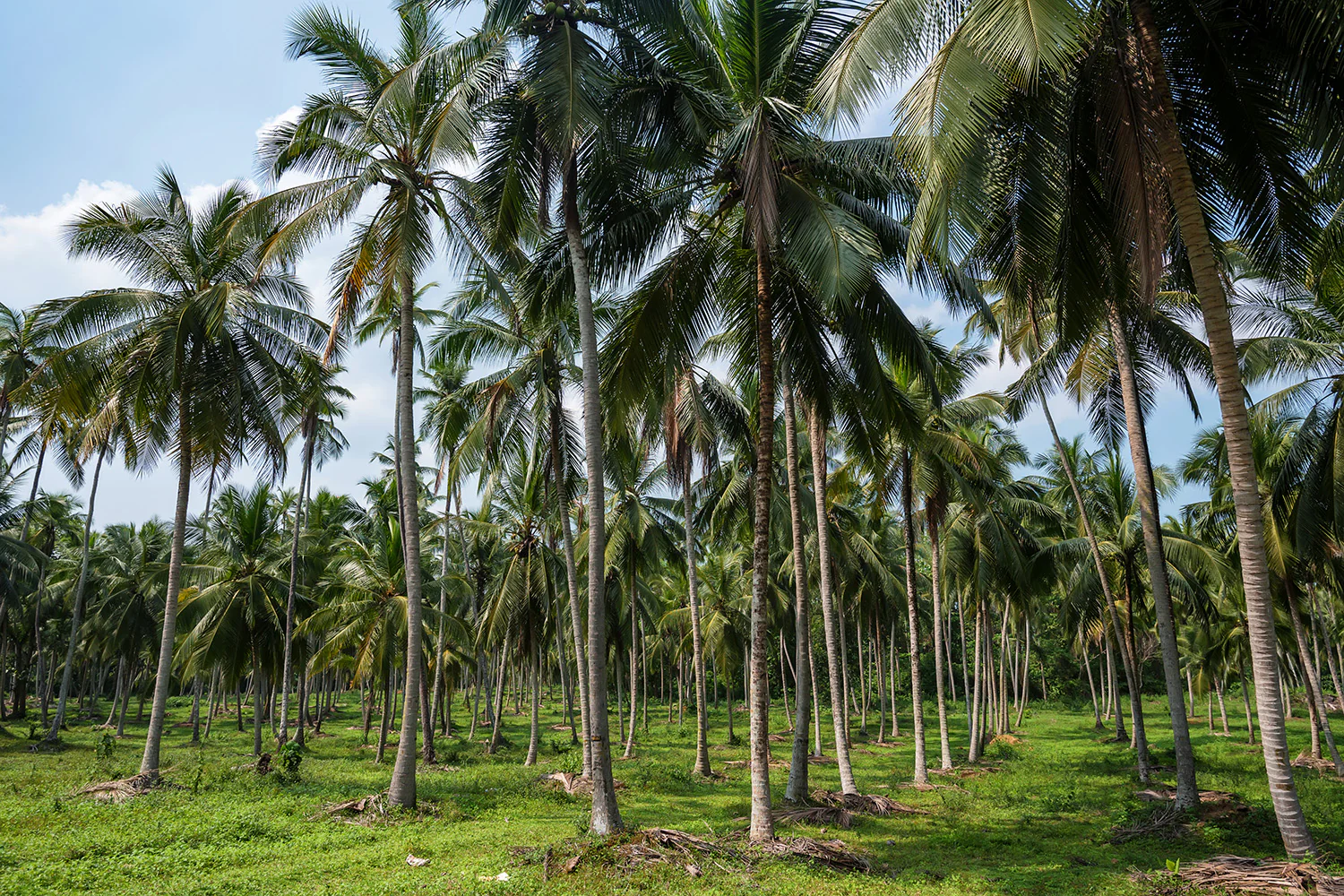Coconut farming is becoming a popular choice among Indian farmers. It offers steady income and long-term benefits. Unlike seasonal crops, coconuts give returns for many years. Therefore, starting coconut farming can be a smart decision.
This farming does not need a lot of manual labour every day. However, it requires proper planning and care in the early stages. You also need the right tools for digging, cleaning, and carrying coconuts. A good tractor is very helpful here.
In fact, many farmers search for the Mahindra 275 before embarking on their farming journey. It is renowned for its strong built quality and efficiency. Let’s now learn how to start your coconut farm step by step.
Start Here with 5 Easy Farming Tips
In this section, we will examine some key points to consider before embarking on coconut farming.
Choose the Right Location and Soil First
The success of your coconut farm starts with the location. Coconuts grow best in warm, humid areas. Therefore, regions with tropical climates are perfect.
Your farm should receive ample sunlight throughout the year. The growth of trees benefits from consistent rainfall. A rainfall level of 1,500 to 2,000 mm is considered the preferred condition for optimal tree growth.
Next, focus on the soil. The soil required by coconut trees must be deep and allow water to drain away easily. Sandy loam, along with red soil, represents a favourable selection. The selection of land should be avoided when water remains stagnant within the area for too long.
Movement of planting should begin with a soil examination. The soil test reveals the pH status and necessary nutrient content of your soil. Efficient coconut tree cultivation takes place in conditions where the soil pH remains within 5.5 and 8.0. Apply a lime solution or add compost to the soil before planting, following proper treatment methods.
Pick the Best Coconut Variety for Your Area
After selecting your land, it’s time to choose the right coconut variety. Some types grow tall, while others stay short. The choice depends on your climate and the size of your farm.
Tall varieties tend to live longer and produce more coconuts. However, they take 6 to 8 years to start fruiting. On the other hand, dwarf varieties typically begin producing nuts in 3 to 4 years. But they don’t live as long.
Moreover, hybrid varieties are now available. These are a mix of tall and dwarf types. They grow faster and give a higher yield.
Always buy seedlings from a trusted source. A strong plant at the start leads to better results in the future. Avoid buying from unknown sellers, as weak plants may die early.
Plant Your Coconut Trees with the Proper Method
Once you have the land and the seedlings, it’s time to plant. Dig a pit of about 3 feet wide and 3 feet deep. Also, maintain proper spacing between the pits.
Typically, leave 25 to 30 feet of space between each plant. This allows proper sunlight and airflow. Additionally, wide spacing helps prevent the spread of pests.
Fill the pit with soil mixed with compost and cow dung. This gives nutrients to the young plant. Water the plant well after covering the pit.
Care for the Trees, Especially in the Early Stage
The first two years are the most important. During this time, your trees need regular attention. Watering is the first task that needs to be managed carefully.
Young coconut trees need water two to three times a week. During dry months, increase watering. Moreover, drip irrigation can conserve water and maintain soil moisture.
Be aware of pests like the red palm weevil and the black beetle. These insects can quickly damage the tree. Therefore, check the trees often and use neem-based sprays for control.
In addition, protect young trees from animals. Fencing is a good way to keep cows and goats away. Healthy trees in the early years mean better yields later.
Harvest and Maintain for Long-Term Benefits
The first fruit-bearing period of coconut trees occurs in year 5 or 6 after planting. Each mature coconut tree produces between 80 and 100 nuts, resulting in an annual harvest. The number of harvested coconuts increases when farmers provide appropriate maintenance to their coconut trees.
The collection process occurs at 45 to 60-day intervals. There are two methods to harvest the nuts: tree climbing or using tools for cutting. It is essential to avoid dropping coconuts from heights, as this can cause potential damage.
Allow the tree to hold only fresh coconuts because old nuts should not remain on the branches. Regular harvesting improves tree health and nut quality. Also, keep the area clean and free from weeds.
Continue fertilising and watering the trees even after they start fruiting. Moreover, prune the dry leaves and clean the base regularly. Well-maintained trees remain productive for over 60 years.
Conclusion
Coconut farming is a long-term source of income. It needs planning, patience, and regular care. However, if done right, it offers steady profits for many years.
Additionally, ensure that your equipment is safe and properly covered. It protects your vehicle from theft, damage, and accidents. Getting tractor insurance is very important. If you’re considering purchasing a tractor, using a tractor loan EMI calculator can help you plan your finances and determine the most suitable repayment option.
Finally, farming is not just about planting. It’s about growing smartly. With the right tools and knowledge, your coconut farm can become your best investment.
